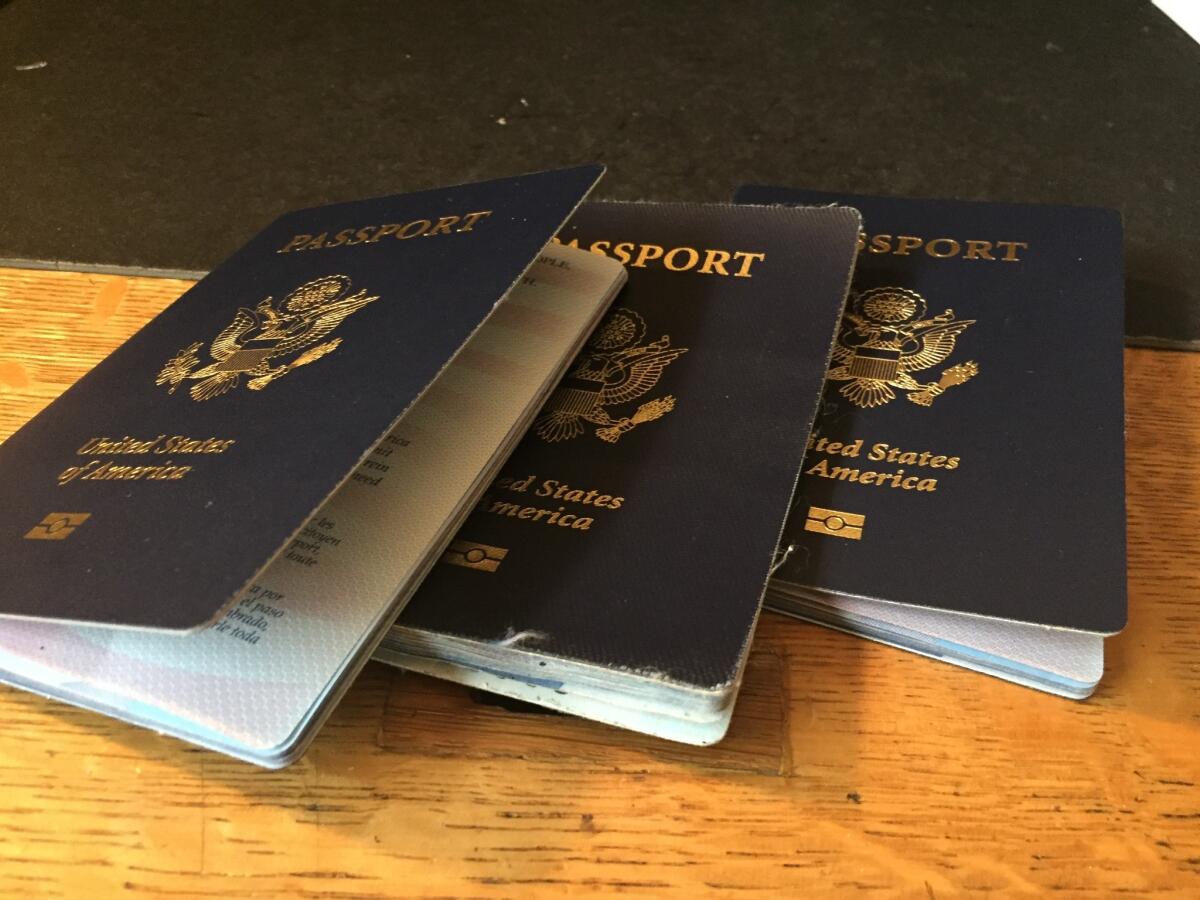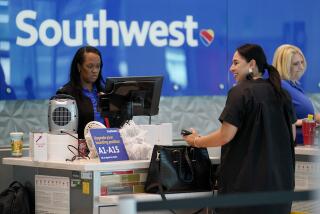Can I travel abroad soon? These passport and pandemic updates will help you decide

- Share via
The U.S. State Department on Aug. 6 relaxed its pandemic warnings about international travel, which means more Americans may be thinking about big trips.
Certainly, more people are boarding planes. Government tallies show that 831,789 travelers went through TSA airport checkpoints on Sunday, far below last year’s numbers, but the highest total since March 17.
For those planning international vacations, there are at least two big questions to consider:1. Your passport?
If you need a new or renewed passport, it’s difficult to predict when you might receive it. Though the State Department has chipped away at its backlog of passport applications, it still has a long way to go and a reduced workforce at its passport offices nationwide.
The agency says its main priority now is processing passport requests for life-or-death emergencies, and it won’t estimate how long it will take to process conventional requests, whether new or in the pipeline.
However, Times readers have shared anecdotal reports of wait times of five weeks to more than three months:
•In Weatherford, Texas, V.B. submitted her passport renewal on May 22 “and finally received an email it will be mailing to us on Aug. 12.” But some parts of the process moved faster than others. G.B., who is married to V.B., wrote that their check “cleared the bank in less than a week after mailing in the application.”
Get inspired to get away.
Explore California, the West and beyond with the weekly Escapes newsletter.
You may occasionally receive promotional content from the Los Angeles Times.
•In Pleasanton, Calif., Erik Scherer said he submitted his passport renewal in early July. “I think I am happy to report that I received the passport back today,” Scherer wrote Aug 8. “I say ‘think’ because I had [the] photo taken with full-on pandemic hair.”
•In Diamond Bar, Randy Kung said he applied for a passport renewal during the week of April 5, in the early weeks of the passport office’s closure, and signed up for email notification of his application’s status. More than three months later, on July 27, he received email notification. On July 30, the passport arrived.
•In Pau, France, David Blackburn (formerly of Long Beach) wrote that he sought a normal renewal — not expedited — and on June 6 put it in the mail.
“I expected long delays as stated on the [Department of State] website,” he wrote. Instead, he said, his renewed passport arrived June 20, barely two weeks after he’d applied.
“Generally, I’m not a big fan of functionaries, but was impressed (but not completely surprised) to get it so quickly,” he wrote.
The State Department updates its passport-backlog statistics every Thursday. On Thursday, officials reported that they’d issued 213,000 passports in the previous week and received 139,000 applications. That left the agency’s backlog at 1.06 million, a number that officials say is not uncommon for the busiest weeks in a normal year.
The State Department’s passport pages include details on contact information, which offices are open, how the process works, how you may be able to get a status update and why the agency continues to cash checks promptly while running behind in its other tasks.
The short answer: Government workers can process your payments while working from home, but can handle secure documents such as birth certificates only in a government office. And most of those remain at reduced capacities.2. Your destination?
The State Department on Thursday did back off its warnings (in place since March) that Americans should avoid all international travel. The move follows major advances made by many nations in reducing COVID-19 cases and deaths.
However, as a spokesperson said, health and safety conditions are “improving in some countries and potentially deteriorating in others.” Also, many countries are wary of American visitors because U.S. infection and death totals are higher than everyone else’s.
State and U.S. authorities urge against nonessential trips, but Los Cabos is reopening.
The European Union decided on Saturday to keep the U.S. on its list of countries whose travelers are most stringently restricted. The United Kingdom continues to require a 14-day quarantine.
Meanwhile, State Department officials urge would-be travelers to check out the department’s updated country-by-country risk-level rankings of 1 to 4: One for “exercise normal precautions” to 4 for “do not travel.”
Get The Wild newsletter.
The essential weekly guide to enjoying the outdoors in Southern California. Insider tips on the best of our beaches, trails, parks, deserts, forests and mountains.
You may occasionally receive promotional content from the Los Angeles Times.
Mexico has a 4 ranking (“do not travel”), and Canada has a 3 ranking (“reconsider travel”). But Canada also forbids Americans from making non-essential visits north of our border.
The U.S. Centers for Disease Control and Prevention is another excellent source of travel advice. The federal agency does its own country-by-country analysis and continues to urge that “staying home is the best way to protect yourself and others from COVID-19.”
The CDC’s country rankings use three risk categories: 1 for low, 2 for moderate and 3 for high. North and South America and most of Europe and Asia are rated high risk. New Zealand and Thailand are among the handful of countries with low-risk assessments.
The CDC analyses also give details on case counts from country to country; you can find more country-specific pandemic information on the World Health Organization website.
More to Read
Sign up for The Wild
We’ll help you find the best places to hike, bike and run, as well as the perfect silent spots for meditation and yoga.
You may occasionally receive promotional content from the Los Angeles Times.






